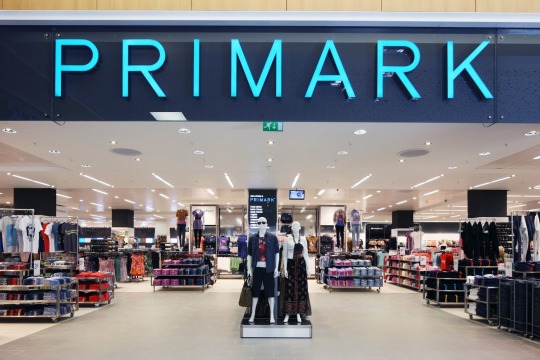
Fast fashion retailer Primark has gained vast popularity throughout Europe, and is taking that momentum over to the U.S., opening its first retail store in Boston last week.
The company’s advantage in the landscape stems from its pricing model, which is approximately 20% less than those at Forever 21, 33% less than Old Navy’s, and almost 40% less than H&M, according to research from Sanford C. Bernstein.
Below, the RTP editorial staff shares thoughts on Primark’s
potential impact
on fast fashion, as well as the sustainability of its pricing model.
Debbie Hauss, Editor-In-Chief: Primark should challenge the U.S. retail industry with some good healthy competition for the department store retailers and retailers like H&M. If the product quality is on par then shoppers will be the winners in this battle. It’s interesting to have this discussion about low-price wars these days when we’re having so many conversations about how retailers can no longer compete on price alone.
Alicia Fiorletta, Senior Editor: Another day and another fast fashion player enters the U.S. market. There’s a lot of buzz surrounding Primark in the news and even trade publications, and undoubtedly with consumers. Personally, I think Primark’s lack of an e-Commerce business will be a minor hurdle for the retailer as it strives to expand in the U.S. However, it is evident that the retailer has a strong digital presence, especially across social networks, which is key for engaging with the key fast fashion demographic: young shoppers. Given fast fashion’s growing influence on the retail industry overall, it will be interesting to see how Primark sinks its teeth into the market.
Rob Fee, Managing Editor: Primark seems to be taking a page out of its competitors’ books in its expansion plans. About ten years ago, H&M stores started appearing in the U.S. with a promise of quality fashion at low prices. The chain largely delivered on that promise. By offering similar fashions at even lower prices, Primark should see some success in the U.S, How low is too low though? Primark will have to maintain a large volume of sales to support this model, and it might be shooting itself in the foot by dismissing e-Commerce.
Adam Blair, Executive Editor:
While there will always be a place on the price spectrum for low-cost competitors, it seems strange for a retailer to be banking on the appeal of low, low prices at a time when the U.S. economy is finally starting to gain strength, and low energy costs are putting more spending money in consumers’ wallets. People certainly want low-cost goods but they also want convenience, and Primark’s lack of an e-commerce alternative is likely to hamper its efforts to gain a foothold in an already crowded field. High media and real estate costs in the markets Primark is initially targeting (Boston, Philadelphia and New York) also mean the retailer will need to make significant investments just to build, and maintain, its profile here. But if Primark can consistently provide value and quality along with low prices, it could push some struggling retail competitors out of the picture.
Glenn Taylor, Associate Editor:
I don’t think Primark will be the major hit in the U.S. that it is in Europe, but the model will help the retailer gain some ground. The success really depends on the quality of the products and how well they relate to the cheaper prices, and having a few stores in select cities as opposed to a large presence should help build its brand exclusivity. The lack of an e-Commerce site doesn’t help their cause on a wide scale, so I can’t see American consumers today jumping through hoops to find the store.
Brian Anderson, Associate Editor: Lower prices will definitely attract a crowd, but Primark’s current avoidance on e-commerce might be a hurdle that the retailer will have to overcome sooner or later. Since digital e-commerce has grown significantly in recent years, I’m sure Primark will be more accepting of opening up more digital channels once they see the potential they have in the region.






